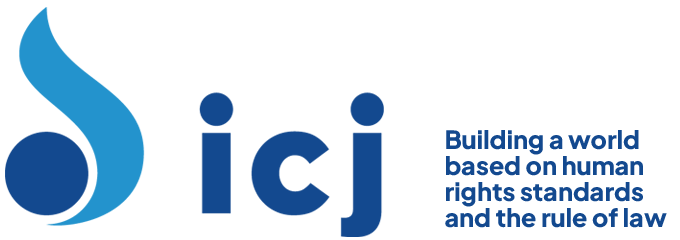Procedural Posture
The appellants, a same-sex couple, applied to adopt each other’s biological children. The Family Court denied the application and the District Court upheld the decision. The appellants appealed to the Supreme Court.
Facts
The appellants were in a lesbian relationship. Through anonymous sperm donations, one woman gave birth to two children while the other gave birth to one. The appellants raised the three children jointly and each applied to legally adopt the other’s offspring.
Issue
Whether two unmarried women, who are mothers of children and who conduct a joint lifestyle can adopt the children of the other.
Domestic Law
Adoption of Children Law 5741-1981.
Section 3(2) (“Adoption may only be done by a man and his wife together; but the court may give an adoption order to a single adopter – (1) If his spouse is the parent of the adoptee or adopted him previously; (2) If the parents of the adoptee died and the adopter is one of the relations of the adoptee and is unmarried”).
Section 25 (“If the court finds that it is in the best interests of the adoptee, it may, in special circumstances and for reasons that it shall state in its decision, depart from the following conditions … (2) The death of the adoptee’s parents and the relationship of the adopter under section 3(2)”).
A v. Attorney-General, Supreme Court of Israel, 2003 (holding that, in special circumstances, a single person may adopt the child of his or her opposite-sex partner if such adoption was in the best interests of the child).
Steiner v. Attorney-General, Supreme Court of Israel, 1955 (holding that a child’s best interests were “a principle that is second to none”).
Comparative Law
Du Toit v. Minister of Welfare and Population Development, Constitutional Court of South Africa, 2002 (finding lack of provision for joint adoption by same-sex couple to be unconstitutional).
Constitution of South Africa, Section 28(2) (A child’s best interests are of paramount importance in every matter concerning the child).
In re adoption of B.L.V.B., Supreme Court of Vermont, 1993 (holding that unmarried same-sex partner of biological mother could adopt children while leaving mother’s parental rights intact).
Adoption of Tammy, Supreme Judicial Court of Massachusetts, 1993 (holding that adoption statute did not preclude same-sex cohabitants from jointly adopting child and finding that adoption was in the child’s best interests).
Re K and B, Ontario Provincial Division Court, 1995 (finding that Child and Family Services Act of Ontario violated Section 15 of the Charter because it did not permit same-sex couples to bring a joint application for adoption).
Re W (Adoption: Homosexual Adopter), High Court of Justice of England and Wales, Family Division, United Kingdom, 1997 (holding that homosexuals may adopt children).
International Law
Convention on the Rights of the Child, Article 3 (“In all actions concerning children, whether undertaken by public or private social welfare institutions, courts of law, administrative authorities or legislative bodies, the best interests of the child shall be a primary consideration”).
Fretté v. France, ECtHR, 2002 (holding that the European Convention did not guarantee a right to adopt and that France had discretion over the issue of adoption by homosexuals because no consensus on the issue existed among member States).
Reasoning of the Court
The Court presented the issue as “whether it is possible, in principle, to recognise each of the appellants as a ‘single adopter’ within the framework of section 3(2) of the Adoption Law, assuming of course that each of the children is adoptable”. Because it found that the appellants did not satisfy the conditions of Section 3(2), the Court considered whether or not their situation could be considered “special circumstances” under Section 25 and whether or not the adoptions would be in the best interests of the respective children.
The Court was guided by the decision in A v. Attorney-General. In that case the government had argued that Section 25 of the Adoption Law only applied in situations where the child had no parent, such as when the child was in the care of a government institution. The court here rejected such an interpretation. In this case the Court followed its earlier reasoning. It emphasised that Section 25 allowed “flexibility of the strict requirements provided in Section 3(2) of the law. This does not involve a departure from the whole framework of the law, since instead of the conditions provided in Section 3(2) of the law there are the requirements provided in Section 25 of the law.”
The Court held that courts should take an individual approach to “special circumstances” in Section 25. In other words, adoption decisions based on Section 25 had to be made on a case-by-case basis that closely considered the best interests of the adoptee. The Court stated:
It cannot be said a priori that because of the homosexuality of the appellants, adoption by them will not be in the best interests of the adoptee. Each case should be considered on its merits; each case should be considered according to its circumstances. I accept that the attitudes of society with regard to the effect of a single-sex couple on the best interests of the adoptee … [are] a part of the circumstances. But they are not the whole picture. They are certainly not the sole consideration within the framework of Section 25 of the Adoption Law.
The Court also made two observations. First the legislature clearly framed the Adoption Law to give courts broad discretion in their ability to establish the “special circumstances” that trigger Section 25 adoptions. Second, despite the courts’ authority over this matter, their discretion was not absolute. The best interests of the child – a “supreme principle” – limited the judicial discretion of members of the Court.
In support of this “supreme principle”, the Court relied on domestic, international, comparative and religious law. In Steiner v. Attorney General, the Court held that in Israel “the best interests of a child were ‘a principle that is second to none’”. The Court also cited the Convention on the Rights of the Child, which provided that, in all actions concerning children, “the best interests of the child shall be a primary consideration”. Similarly, under the Constitution of South Africa, “A child’s best interests are of paramount importance in every matter concerning the child”. Finally, the Court quoted a statement from Israeli religious court leaders that:
[A]ccording to civil law and Jewish religious law in the State of Israel, questions concerning the rights of parents and their children are decided solely, without exception, in accordance with the principle of the best interests of the child, which serves as a supreme principle under Jewish religious law and the laws of the State of Israel, and is equally binding in all the religious and civil courts.
Having established that the best interests of a child should guide the adoption process, the Court addressed the issue of the prospective adopter’s sexual orientation. The Court decided that its approach to sexual orientation in the adoption context should be case-by-case:
The fact that the biological parent and the person seeking to adopt are involved in a single-sex relationship or a heterosexual relationship is merely one of the circumstances in the complete picture. It is not an essential condition; it is not a sufficient condition; it is not a general condition. Everything depends upon the sum total of all the circumstances, and the nature of the relationship – homosexual or heterosexual – is one of those circumstances that should be taken into account.
Despite the suggestion that sexual orientation could be identified as a negative factor in adoption cases, the Court did not accord significant weight to the suggestion that parental adequacy might be compromised by a person’s (same-sex) sexual orientation. The Court cited fourteen studies, none of which found in adopted children negative effects that stemmed from the lesbian or gay sexual orientation of their adoptive parents. Nonetheless, the Court held that gay and lesbian individuals should not be allowed to adopt as a general principle. Such decisions should be left to the Family Court on a case-by-case basis. “On the basis of all of the material before it, the Family Court will reach a conclusion as to the best interests of the children … and whether there are ‘special circumstances’.”
The Court also noted that, contrary to the government’s argument, second-parent adoption by a biological parent’s same-sex partner would not create a new legal status akin to same-sex marriage. The issue before it was simply the right of an unmarried individual to adopt her same-sex partner’s children. “We are not determining a rule that a single-sex couple constitutes ‘a man and wife together’; we are not being asked to make a joint adoption order. We are concerned with an adoption by someone who is not married… Our judgment does not contain any determination, implication or hint of [marital] status.”
Consistent with its conclusion that the Family Court alone should ascertain the best interests of the adoptee, the Court, by majority, remanded the case to the Family Court. On remand, the Family Court granted the adoptions.
Yaros-Hakak v. Attorney General, Supreme Court of Israel (full text of judgment, PDF)




